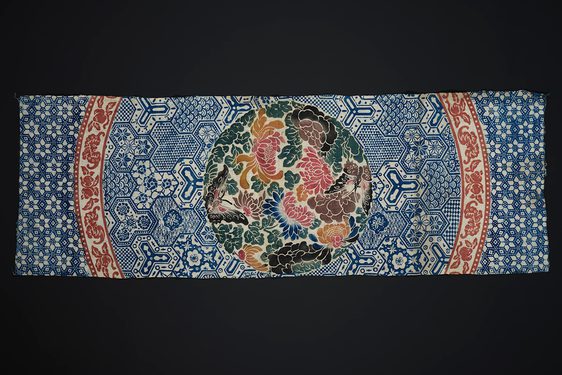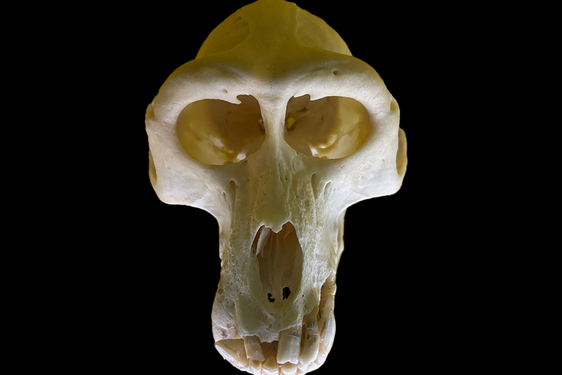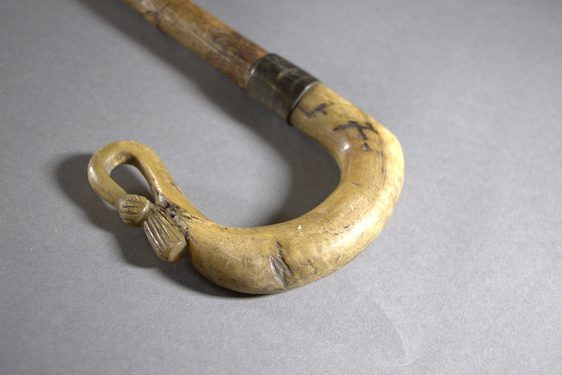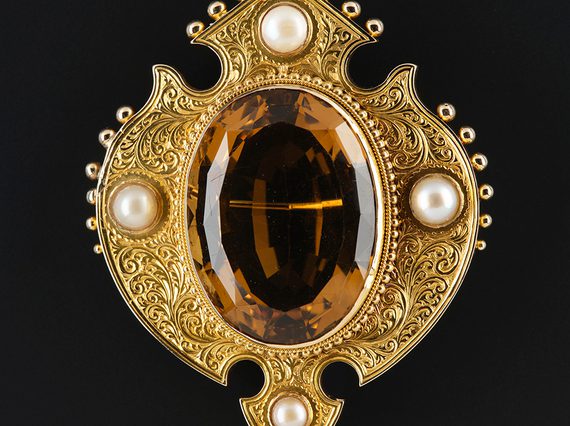
Geology to Jewellery: The history and science of Cairngorm quartz
News Story
There is a whole fascinating world of Scottish minerals, reflecting the large variation in the country’s geology and physical landscape.
The sheer variety is expressed beautifully by John Ruskin. In 1884 he described Scotland as ‘a country which is itself one magnificent mineralogical specimen’, which presents ‘examples of nearly every mineralogical process and phenomenon which have taken place in the construction of the world.’
Scotland’s mountains are synonymous with the country’s image and social history. This geology is reflected in objects which are set with spectacular specimens. Our collections trace the history from the formation of these gemstones to the point when they became treasured items.
From the late-eighteenth century, a type of quartz became especially sought after. Popularly known as ‘cairngorms’. The coloured crystals conjured images of the mountain environment for people in Scotland, and beyond.
National Museums Scotland’s collections of Cairngorm quartz is outstanding in Scotland and important internationally. The specimens and jewellery objects that have survived trace the story of these materials from geology to jewellery. From their formation in the landscape, through the hands of urban craftspeople as they were formed into luxury goods. And, finally, on to the people who gifted, wore and treasured them.

A deep orange-brown faceted Cairngorm quartz.
Mountain Geology
Many minerals are made during mountain building. This includes gems and semi-precious stones, many of which we find in our collection.
The 400 million year old, once lofty, Grampian mountains of central Scotland is the home to a variety of gemstones. These include green beryl, clear or light blue topaz and clear to brown quartz.
Image gallery

Three green beryl crystals showing deeply etched crystal faces. From Beinn A’Bhuird. Museum reference: G.2013.40.10, G.2013.40.11 and G.2013.40.13.

A broken fragment of a near-colourless topaz crystal. From Ben Avon.

A pale blue topaz with well developed crystal form, held in a brass clip. From Meall an t-Slugain. Museum reference: G.397.13.

A large faceted blue topaz, from Beinn Bhreac, Sutherland.

A faceted aquamarine Museum reference: G.1994.29.4.
Since the Earth first formed 4.65 billion years ago, geological processes have concentrated lighter chemical elements into minerals on the Earth's continental crust.
Aluminium and fluorine make topaz, and silica and oxygen bond to form Quartz. Quartz is one of the most common minerals in the Earth’s crust, and it forms rocks like the Cairngorm granite.

An example of the Cairngorm granite, comprised of pink feldspar, black mica and grey quartz. Museum reference: G.2001.119.67.1.
Quartz that is clear, colourless and glassy has a perfectly arranged crystal structure. But conditions in nature aren’t always perfect, and some specimens of quartz contain gaps in their crystal structure, or rogue chemical elements. This changes the appearance of the mineral.

A 'perfect' transparent colourless crystal of quartz, next to one that is brown and opaque, indicating its less-than-perfect crystal structure.
Incompatible chemical elements such as Uranium and Thorium are also found on Earth’s continental crust. They don’t bond as easily with other elements, and become concentrated in rocks like the Cairngorm granite. They are also radioactive.
Exposure to radioactivity, or high temperatures during burial, can damage a mineral’s internal structure. This can cause defects which can turn the crystal smoky, or dark. This is what has happened to many quartz crystals in some mountain belts, including at the edge and top of the Cairngorm granite. It’s this process that formed Cairngorm quartz, a distinctive and desirable smoky brown gemstone.

Two brown smoky quartz crystals displaying the range of sizes these crystals may form at.
When mountains are eroded and destroyed, some minerals survive the process and are concentrated. Surface rocks and minerals fall and slide downhill, into rivers. The rough-and-tumble of the riverbed removes weaker minerals, leaving the stronger minerals behind. Many of the gems in our collection were sourced in rocky crevices in mountains, and the rivers draining them.
Using science to find fake gems
Quartz may be common, but its properties make it an excellent gemstone. It is resistant to scratches and breakage, easy to facet and polishes to a lovely sparkle, making it a very popular stone for making jewellery.

A 480 ct Cairngorm quartz gemstone, showing a subtle brown colour. Museum reference: G.1888.271.
However, not all quartz is created equal. Although 30% of our mineral collection is made up of quartz, it only makes up 13% of our loose gemstone collection.
This disparity is partly because it requires a relatively large piece of stone to make a sizable gemstone. Additionally, the quartz crystal’s colour and clarity means that not all crystalline quartz is suitable to be faceted into a stone. The largest and 'best' material was commonly sourced from the Cairngorm mountains. It became colloquially known as 'cairngorm stones'.
There is a rainbow of natural Scottish quartz colours. This varies from near black morion stones through browns to the yellow of citrine, from colourless rock crystal through smokey grey to purple amethyst.
The colour of these stones is a result of the interplay of impurities within the crystal structure and environmental conditions such as irradiation.

A selection of Scottish quartz gemstones showing the range of possible colours.
Culture, fashion and scarcity all determine which colours of quartz are the most sought after and therefore the most valuable. But it is possible to change the colour of a gemstone through different processes. People have been treating gemstones to change their colour for 4,000 years.
You can irradiate a pale stone to deepen the 'smoky' brown colour. You can heat treat a brown stone to 'heal' some of the radiation damage to reduce the brown and grey notes and intensify the orange and yellow. Similarly, you can also heat treat purple amethyst to turn it yellow.

A half purple-half orange quartz gemstone, commonly known as 'Ametrine'.
With the popularity of Scottish quartz jewellery, it’s inevitable that imitations were made. Stones were imported and a lot of heat treatment was carried out.
This poses a bit of a problem when trying to determine where stones came from. Gemmologists use the optical properties of a gemstone to determine if it is what it appears to be. We can use gemmological equipment such as a refractometer or a polariscope to distinguish quartz from imitations stones, like yellow topaz, or coloured glass.
We can use a dichroscope to distinguish heat treated amethyst from natural citrine. Natural Citrine is dichroic, which means that it changes colour depending on which angle you look at it. Whereas heat treated amethyst loses this ability.

An amber-coloured natural citrine under a dichroscope. The dichroscope reveals the two dichroic colours, indicating the stone has not been heat treated.
Gems in Scottish craft
This rainbow of quartz can be seen across huge range of distinctively Scottish objects from the eighteenth century onwards. The warm colour and association with the mountain environment was key to their popularity. This was a time when scientific knowledge about geology and mineralogy was reshaping understandings about the formation of the earth.
Cairngorms were used as seals, buttons and brooches. They decorated weapons and accessories of Highland dress. They were set into luxury boxes made of precious metals for perfume, jewellery, stationary and sewing. One enormous example sits atop a large snuff and cigar mulls, made from a ram’s head. This was designed and made to showcase the highest levels of craft skill.
Image gallery
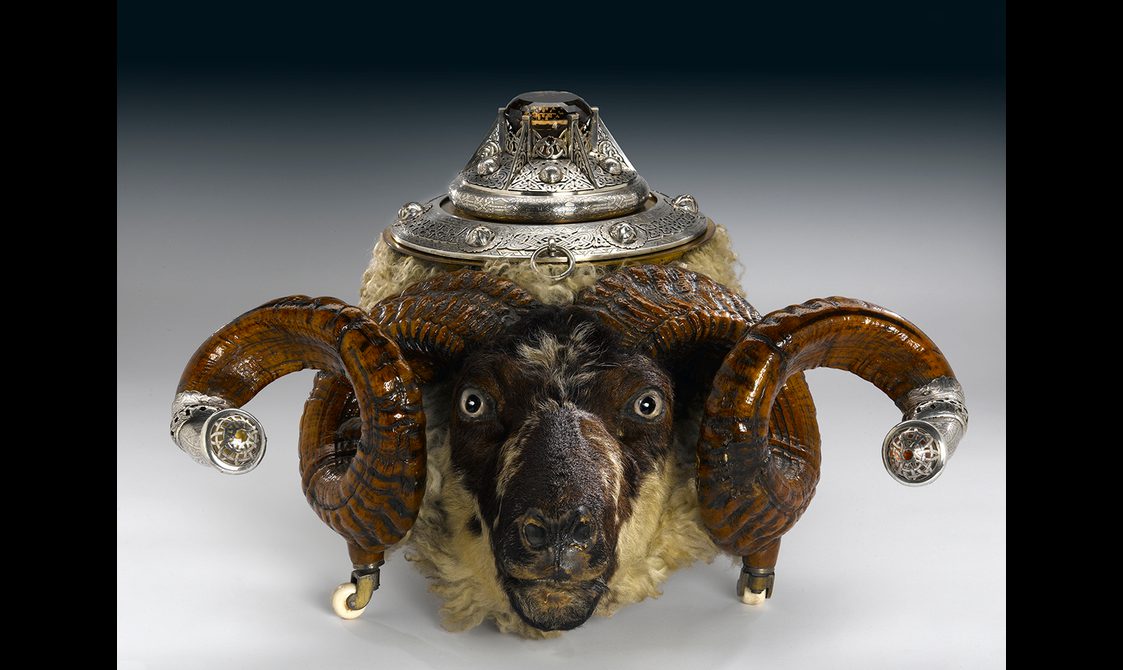
Table snuff and cigar box made from a ram's head mounted on three casters, with a silver lid and silver-mounted horns, topped with a cairngorn. Part of the insignia of the Incorporation of Goldsmiths of Edinburgh and made by R. & H.B. Kirkwood of Edinburgh. Museum reference H.NQ 502.
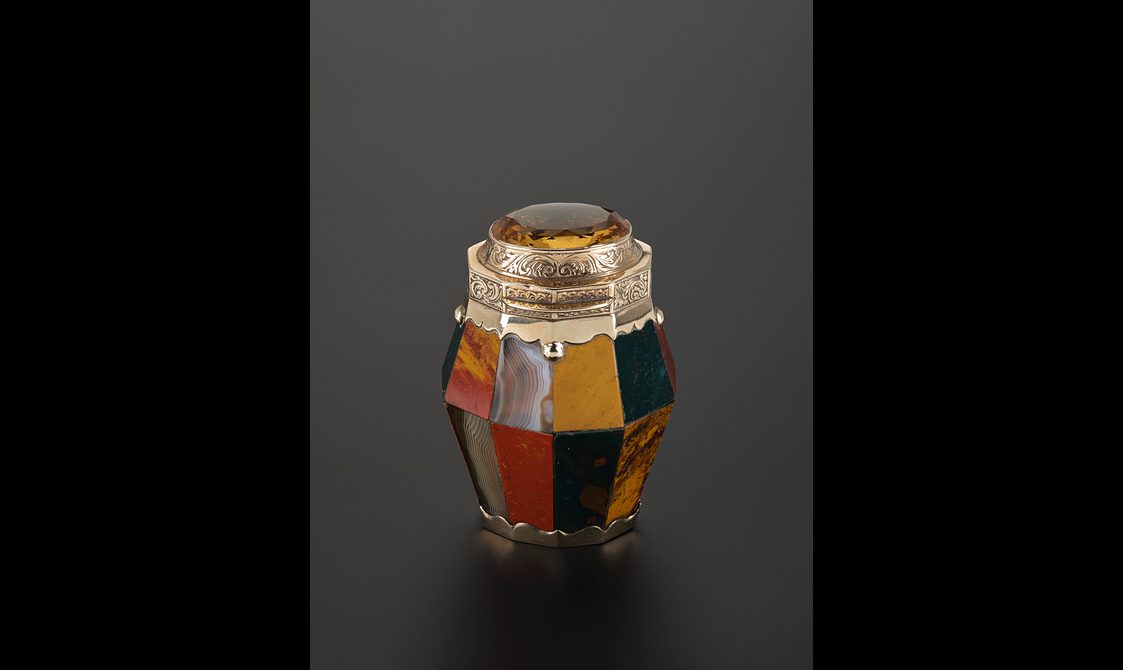
Gold and agate vinaigrette mounted with a Cairngorm. Scottish, nineteenth century. Museum reference X.2023.73.
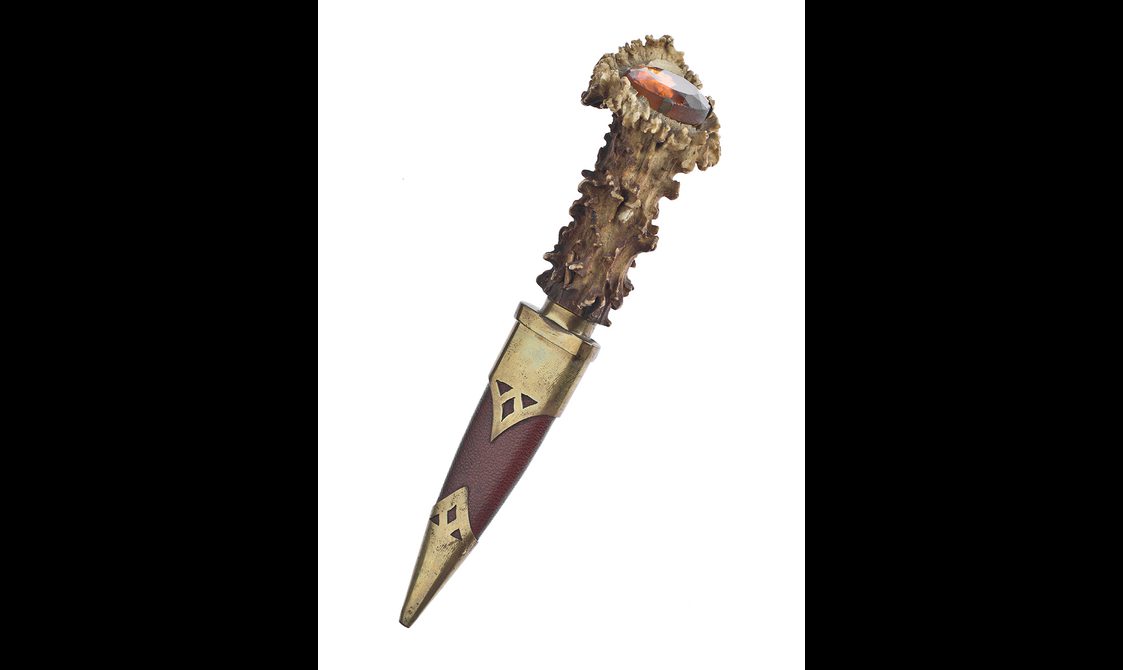
Dirk, with an antler hilt and a cairngorm set into the top. Museum reference H.LC 96
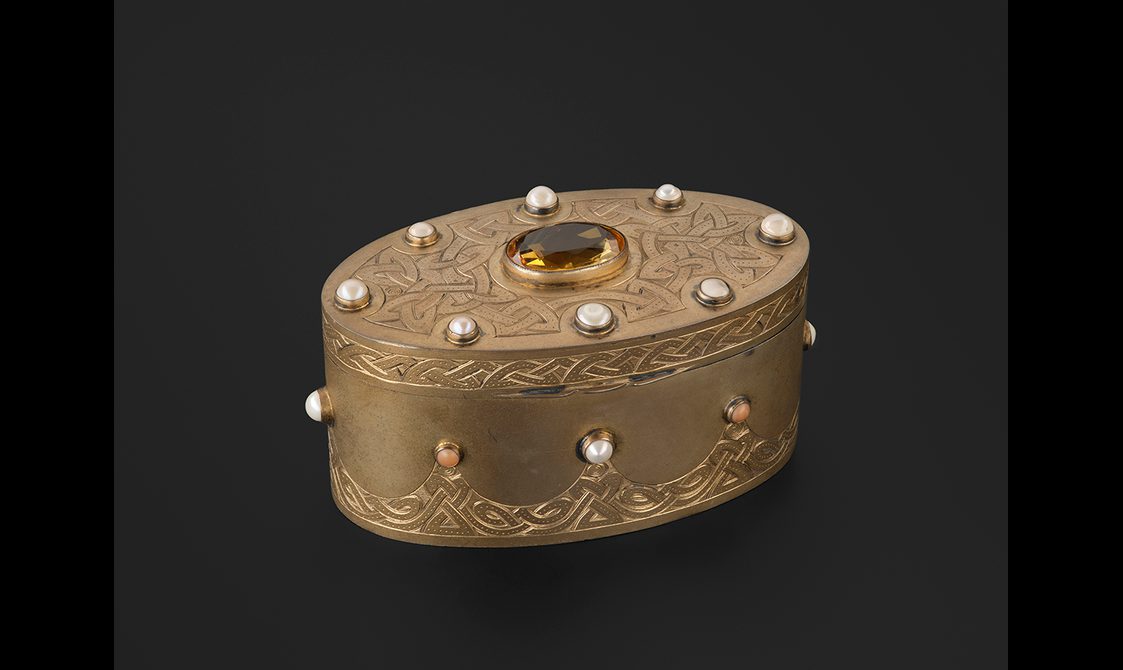
Silver gilt box mounted with Scottish pearls and a Cairngorm on the lid, with further Scottish pearls around the sides. By Robb of Ballater, Edinburgh, 1922. Museum reference X.2023.85
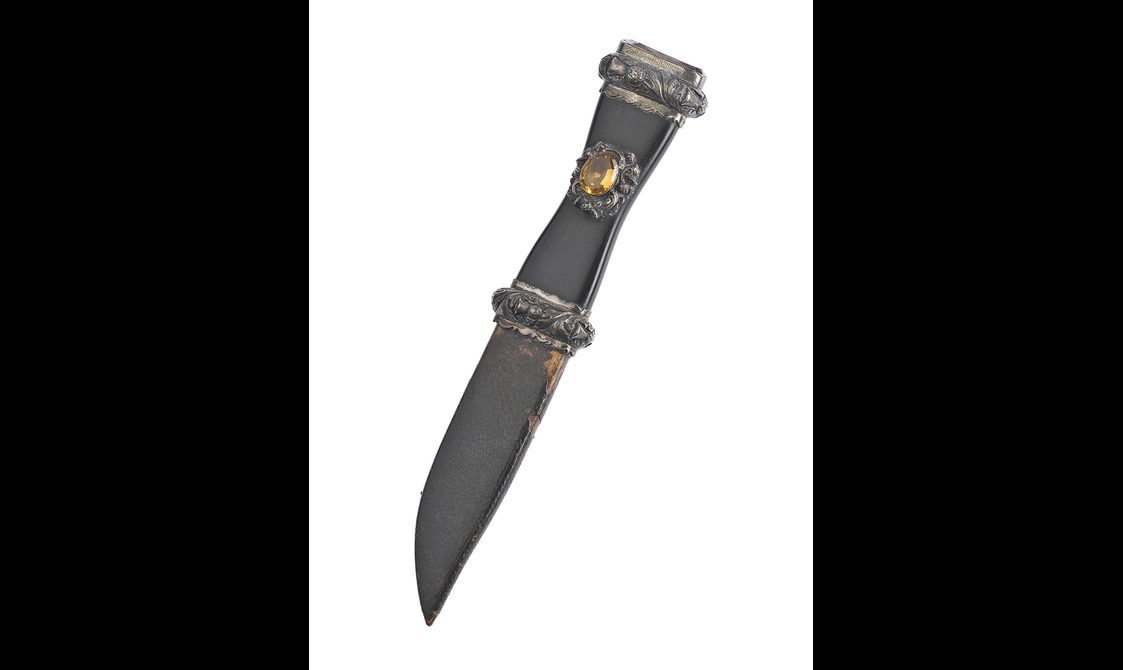
Silver-mounted sgian dubh with a cairngorm on the wooden hilt. Museum reference H.MCR 14
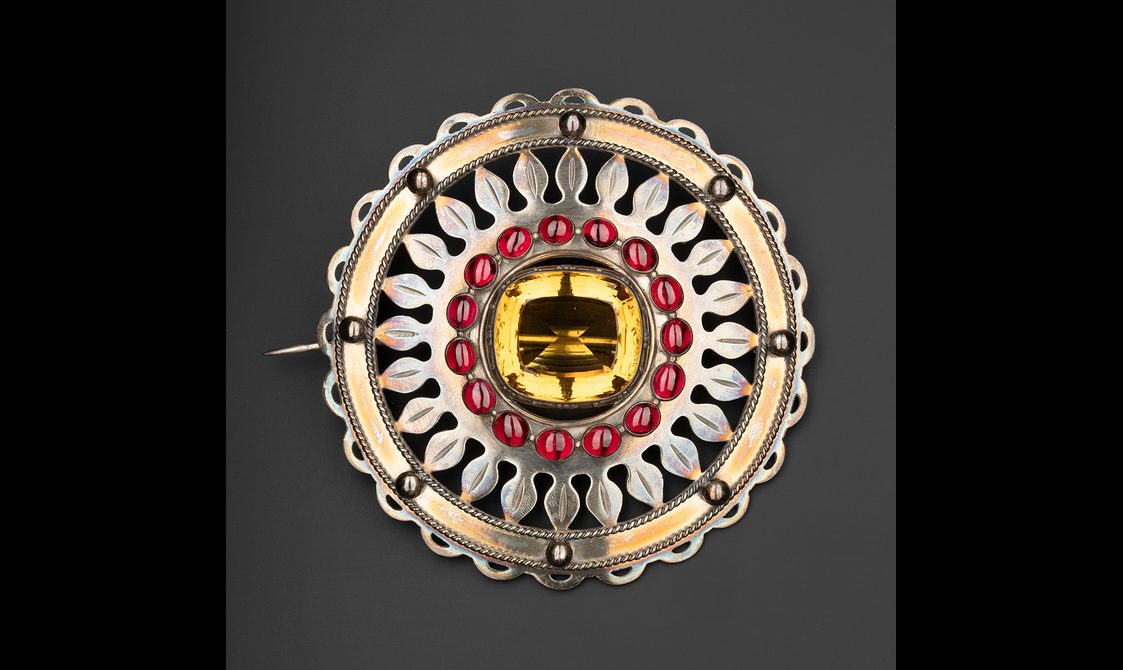
Silver plaid brooch set with a cairngorm in the centre and a ring of sixteen carbuncles round it. Worn by the chiefs of Clanranald, mid 19th century. Museum reference: H.MCR 25

Round brooch of silver, set with polished moss agates, with a facetted cairngorm mounted in the centre, a silver buckle and a tongue. Museum reference: H.NGB 103
The mountain links are seen most clearly in jewellery, where a sense of place and landscape is condensed into small, valuable and often deeply personal objects.
Unlike the specimens in the geology collections, Cairngorm jewellery rarely survives with information on the precise origins of the stones. Information about materials was often communicated directly to the original owners by jewellers themselves. But, more often than not, this information is lost over time. However, in some cases, the object itself gives us clues as to whether or not the quartz originated in Scotland.
An inscription on the back of a gold brooch, for example, tells us that it was made of Scottish gold by the Glasgow firm, Muirhead & Sons in the 1860s. A short-lived gold rush in the 1860s drew international attention to the county of Sutherland, in the north east Highlands. This prompted jewellers across the country to produce pieces from those precious metals together with other minerals and gems sourced in Scotland.
Muirhead was one of several jewellers who are well-documented as purchasing Sutherland gold and crafting highly-desirable objects. These were sold from their fancy showroom in the city. In this piece, the gold was set with Scottish freshwater pearls and a central faceted cairngorm. These materials told a story about the range and quality of jewellery materials available from central and northern Scotland.
When set in jewellery, the smoky, earthy hue of Cairngorms did not sparkle like colourful diamonds but represented a different kind of wealth. They conveyed ideas of ancestry, ties to the landscape, and the geological processes of mountain building.
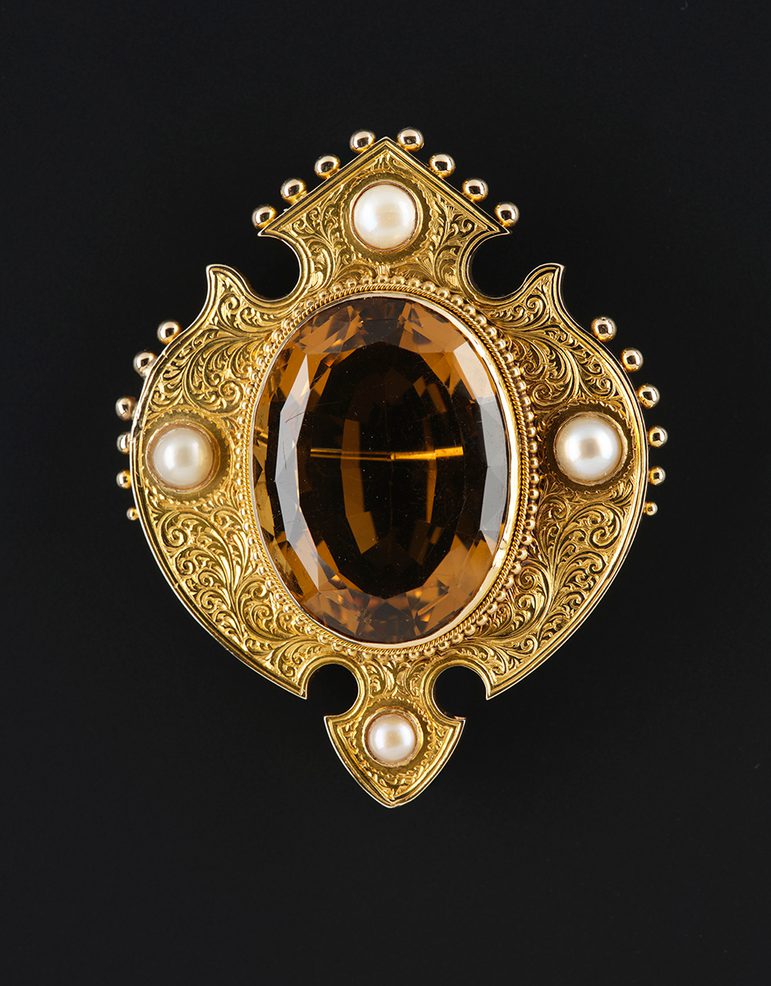
Brooch made from native gold sourced in Sutherland, set with a central cairngorm stone and surrounded by four Scottish freshwater pearls, by Glasgow jewellers Muirhead & Son, c. 1868-1873. Museum reference:
X.2018.17
The naming of Cairngorm pebbles
There is evidence of this variety of quartz being called cairngorms – or sometimes Cairngorm pebbles – from at least 1780. The name appears in newspaper adverts from stone workers or lapidaries seeking ‘CAIRNGORUM STONE’ to polish into seals and brooches. It is also used in letters from an elite landowner, Sir James Grant, Chief of Clan Grant in Strathspey. He refers to sourcing ‘Scots pebble’ or ‘Cairn gorm stones’ from his land for making a seal.
These documentary sources tell us that by the late-eighteenth century the mountain (or the mountain range) had given its name to this variety of quartz. It also tells us that it was commonly understood.
Helpfully, the same body of letters tells us that a man named Sandy Lawson was sourcing these stones. But it suggests that finding good quality stones wasn’t an easy task:
‘he went only once to the hills this year and made nothing of his travels’.
Small pieces of information like this throw light on the people collecting these materials. They reveal that personal connections were often key to securing stones. At this early point, routes from the hill to the jeweller were still somewhat informal.

An t-Aonach, the north ridge of Cairngorm.
Minerals in museums
Stones made their way to the museum via the same routes. In 1811, Professor Robert Jameson – the founder of our Earth Systems collections – described ‘Cairngorm… of various colours: yellowish-white, clove-brown, wine-yellow, and orange-yellow’.
He wrote about huge examples of cairngorms that had been brought from upper Aberdeenshire to the capital by a lapidary named Mr White.
Casts of these rare, large specimens were made before the stones were then sliced, faceted and polished in White’s workshop. They were made into into jewellery. This surviving glimpse at the journey of these particular stones takes us from hill through museum and workshop. It is a useful reminder of the multifaceted scientific, cultural and commercial interest in these stones at a time when geological knowledge was evolving.
As both scientific specimens and sparkling showpieces, these stones have always been understood and appreciated as fragments of Scotland’s mountain environment.
Written by

Emily Brown
Assistant Curator of Earth Systems

Dr Sarah Laurenson
Principal Curator of Modern and Contemporary History
